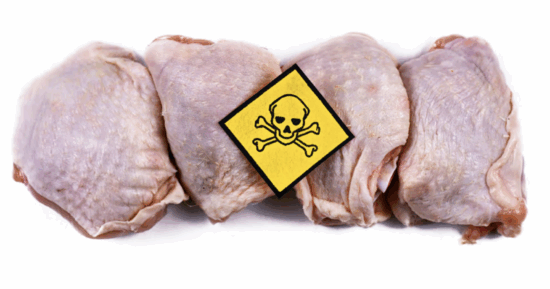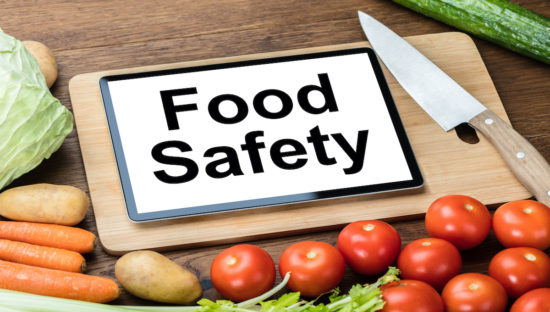— OPINION —
Preharvest control of zoonotic pathogens, including Salmonella is important to public health. Processors cannot eliminate zoonoses carried in by animals, especially raw products from carcasses that have been mechanically defeathered or dehaired. Additionally, animal production areas contaminate the environment including produce fields. The vectors include manure, air, water, birds and insects. The scientific studies for eliminating zoonotic pathogen carriage are plentiful.
This month, a Journal of Food Protection article by the USDA’s Food Safety and Inspection Service (FSIS) and Centers for Disease Control and Prevention authors, cataloged salmonellosis outbreaks attributed to chicken (6). The authors wrote, “Prior to slaughter, vaccinating chickens against Salmonella is a highly effective prevention strategy that could have impacts along the farm-to-fork continuum. . . . However, there are many serotypes of Salmonella for which vaccines do not exist.”
Because there are many other means other than vaccines to prevent zoonotic pathogen carriage in food animals, it prompted me to write this opinion. The classic example is Pomeroy (12). His team implemented practices recommended in the 1970’s (16) to produce Salmonella-free turkeys. FSIS confirmed they were effective (5). Pomeroy was a member of the NAS National Research Council Committee on Salmonella, that published An Evaluation of the Salmonella Problem: Summary and Recommendations (10). The article listed eight interventions for reducing the incidence of salmonella in domestic animals; none were vaccination.
Googling control of salmonellosis in domestic animals yielded an AI summary, “Control of salmonellosis in domestic animals involves a multi-faceted approach including strict biosecurity, good hygiene, and minimizing animal stress. Key strategies include isolating new animals, implementing rigorous cleaning and disinfection practices, protecting feed and water supplies from contamination, and managing the herd environment to prevent stress. Additionally, vaccination and monitoring animal health can help reduce risk and control spread.” Pomeroy and the National Research Council would be tickled.
In this century, there are many studies and reviews for preharvest control of zoonoses. Here are a few, cited below at: 2, 4, 7, 9, 11, 13, 14, 15. There are many more.
Implementing these preharvest controls will not be free although some studies show increased growth with probiotic use. Declaring Salmonella as an adulterant would provide a level playing field for all. For example, declaring some Shiga Toxin positive E. coli (STEC) as adulterants in beef stimulated controls across the industry and is likely a major factor in fewer STEC illnesses in this century than salmonellosis.
Declaring epidemic strains of Salmonella as adulterants to promote controls would also be in keeping with the spirit of 21 USC 602 – Sec. 602. Congressional statement of findings (1) and Federalist No. 51 The structure of the government must furnish the proper checks and balances between the different departments “To the People of the State of New York: But what is government itself, but the greatest of all reflections on human nature? If men were angels, no government would be necessary. . .”
Food producers and processors are not angels; they must make profits to thrive and feed customers. But as Congress wrote in 1907 (1), “It is essential in the public interest that the health and welfare of consumers be protected by assuring that meat and meat food products distributed to them are wholesome, not adulterated, and properly marked, labeled, and packaged.
“Unwholesome, adulterated, or misbranded meat or meat food products impair the effective regulation of meat and meat food products in interstate or foreign commerce, are injurious to the public welfare, destroy markets for wholesome, not adulterated, and properly labeled and packaged meat and meat food products, and result in sundry losses to livestock producers and processors of meat and meat food products, as well as injury to consumers.
“The unwholesome, adulterated, mislabeled, or deceptively packaged articles can be sold at lower prices and compete unfairly with the wholesome, not adulterated, and properly labeled and packaged articles, to the detriment of consumers and the public generally.”
“Salmonella contamination in poultry remains a significant public health concern, impacting both the poultry industry and consumers. Effective control measures must span the entire poultry production continuum, from farm to table, to mitigate the risk of contamination and outbreaks.”(3). The scientific studies for control are plentiful. Declaring epidemic strains of Salmonella as adulterants would provide an incentive to implement those controls. Lobbyists will ask for more data but the data exists — including the cost to public health.
References:
21 USC 602 – Sec. 602. Congressional statement of findings
Bakin, Bashiru C., Kathryn Stolte-Carroll, Jessica Sigman, Stephanie M. Ritchie, Glenn E. Tillman, Iva Bilanovic, Barbara B. Kowalcyk. 2025. A Systematic Review on Preharvest Interventions Used to Control Salmonella in Poultry Rearing in the United States. Journal of Food Protection. 88:100474
Betiku, E., Ogundipe, T.T., Kalapala, T. and Obe, T., 2025. A Mini-Review on Multi-Hurdle Control of Salmonella Along Poultry Production Continuum. Animals, 15:p.875.
Brashears, M.M., Jimenez, R.L., Portillo, R.M., Bueno, R., Montoya, B.D., Echeverry, A. and Sanchez, M.X., 2025. Innovative approaches to controlling Salmonella in the meat industry. Meat Science, 219.
Campbell, D. V., S. S. Green, C. S. Custer, and R. W. Johnston. Incidence of salmonella in fresh dressed turkeys raised under salmonella controlled and uncontrolled conditions. Poult. Sci. 61:1962-1967.
Chard, A.N., Eisenstein, T., Coté, A., Kremer-Caldwell, S., .2025. Salmonella Illness Outbreaks Attributed to Chicken by Product Type, United States, 1998-2022, Journal of Food Protection.
El-Saadony, M.T., Salem, H.M., El-Tahan, A.M., Abd El-Mageed, T.A., Soliman, S.M., Khafaga, A.F., Swelum, A.A., Ahmed, A.E., Alshammari, F.A. and Abd El-Hack, M.E., 2022. The control of poultry salmonellosis using organic agents: An updated overview. Poultry Science, 101:.101716.
Fathima, S., Shanmugasundaram, R., Adams, D. and Selvaraj, R.K., 2022. Gastrointestinal Microbiota and Their Manipulation for Improved Growth and Performance in Chickens. Foods, 11:1401.
Kosuri, P., Muttathukonam, S.H., Reddyvari, R., Gao, M., Ren, Y. and Amalaradjou, M.A., 2025. Probiotic application reduces Salmonella Enteritidis contamination in layer hatching eggs and embryos. Poultry Science, p.105389.
National Research Council, 1970. An evaluation of the Salmonella problem: Summary and recommendations. Journal of Food Protection, 33:42-51.
Obe, T., Boltz, T., Kogut, M., Ricke, S.C., Brooks, L.A., Macklin, K. and Peterson, A., 2023. Controlling Salmonella: strategies for feed, the farm, and the processing plant. Poultry Science, p.103086.
Pomeroy, BS, Nagaraja KV, Ausherman LT, Peterson IL, Friendshuh KA. 1989. Studies on feasibility of producing Salmonella-free turkeys. Avian Dis. 33:1-7.
Reddyvari, R., Ren, Y., Kosuri, P., Kanike, E., Thankachan, A., Khatri, K.B. and Amalaradjou, M.A., 2025. Novel Probiotics Lactobacillus paracasei and Lactobacillus rhamnosus Inhibit Salmonella Colonization in Layers and Prevent Egg-borne Transmission. Food Control, p.111781.
Ruvalcaba-Gómez, J.M., Villagrán, Z., Valdez-Alarcón, J.J., Martínez-Núñez, M., Gomez-Godínez, L.J., Ruesga-Gutiérrez, E., Anaya-Esparza, L.M., Arteaga-Garibay, R.I. and Villarruel-López, A., 2022. Non-Antibiotics Strategies to Control Salmonella Infection in Poultry. Animals, 12:102-130.
Singh, A.K., Wang, J., Patil, P.S., Subedi, D., Mallavarapu, B., Bhumanapalli, S., Vaddu, S., Dalloul, R.A., Singh, M. and Thippareddi, H., 2025. A systematic review and meta-analysis of the efficacy of alternatives to antibiotic growth promoters as strategies to reduce Salmonella in meat-type poultry (pre-harvest). Poultry Science. 104:p.105640.
USDA FSIS. 1978. Recommendations for the reduction and control of salmonellosis. Report of U.S. Advisory Committee on Salmonella, January 1978. Food Safety and Quality Service, U.S. Department of Agriculture.
Threaten feces detection?
Plugging poultry cloaca to reduce non-visible fecal material on carcasses?
Berrang,M. E., R. J. Buhr, J.A. Cason, and J.A.Dickens. 2001. Broiler carcass contamination with Campylobacter from feces during defeathering. J. Food Prot. 64:2063–2066.
Berrang, M. E., Meinersmann, R. J., & Adams, E. S. (2018). Shredded sponge or paper as a cloacal plug to limit broiler carcass Campylobacter contamination during automated defeathering. J. Applied Poultry Research, 27:483-487.
(To sign up for a free subscription to Food Safety News, click here)
oison chicken



